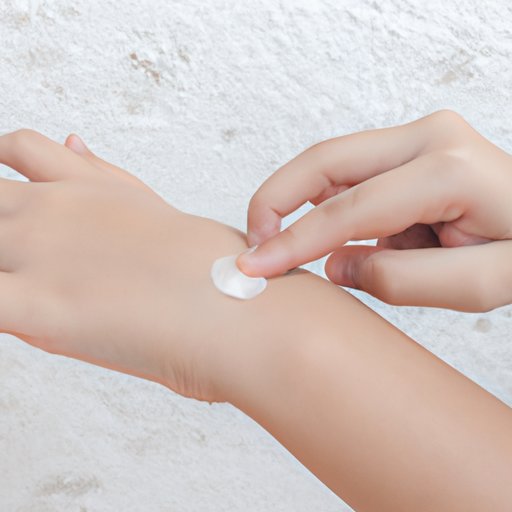
I. Introduction
It’s not uncommon for people to experience cuts or wounds in their day-to-day life. However, it’s essential to recognize and treat an infected cut to prevent further complications. The purpose of this article is to provide readers with information on how to know if a cut is infected and what steps they can take to prevent and treat it.
II. Symptoms of an Infected Cut
There are a few common symptoms to look for when it comes to an infected cut. These include redness, swelling, drainage, and warmth around the wound area. These symptoms occur due to the body’s natural response to an infection, which can be caused by bacteria, fungus, or other pathogens entering the wound. When the immune system tries to fight off the infection, it can cause these symptoms.
Infected cuts can look different from person to person and can range from mild to severe. The area around the wound might appear swollen, red, and tender to the touch. Some people might also notice pus or other discharge coming from the wound or feel pain or throbbing around it.
III. The Importance of Cleaning
Cleaning the wound is the most effective way to prevent infection. Before touching or cleaning the wound, wash your hands thoroughly with soap and water. Once your hands are clean, rinse the wound with cool water to remove any debris or dirt. Avoid using hot water or soap that can irritate the wound. Instead, use a mild saline solution or hydrogen peroxide to help kill any bacteria around the wound.
After cleaning the wound, pat it dry with a clean towel or gauze and apply a sterile bandage or dressing to keep it clean and dry. Change the bandage daily or as needed, depending on how fast the wound is healing. If the wound is deeper, consider getting stitches or other medical attention to help it heal properly.
IV. Recognizing Risk Factors
Some people are more at risk for developing an infected cut, such as those with weakened immune systems, diabetes, or other chronic conditions. These conditions make it harder for the body to fight off infections or slow down the healing process. It’s essential to take extra precautions if you fall into these high-risk groups.
Other risk factors include bites or puncture wounds, which can carry more bacteria than other types of cuts. People who work in areas with a high risk of infection, such as hospitals or nursing homes, should also be extra cautious.
V. Treating the Infection
If people suspect that their cut might be infected, they should take steps to treat it immediately. Applying an antibiotic cream or ointment to the wound can help kill bacteria and speed up the healing process. Oral antibiotics might also be necessary for more severe infections. Avoid popping or draining the wound, as this can spread the infection or make it worse.
If the infection is severe or spreading, it’s important to seek medical attention. Doctors might recommend draining the wound, prescribing stronger antibiotics, or even surgery in rare cases.
VI. When to See a Doctor
If readers notice any of the warning signs associated with an infected cut, such as a fever, red streaks around the wound, or pus or other discharge that isn’t clearing up with at-home treatment, they should seek medical attention. In some cases, the infection can spread to other parts of the body and cause severe, life-threatening complications.
VII. Prevention Techniques
Prevention is key to avoiding an infected cut. Covering the wound with a bandage or dressing can help keep it clean and dry and prevent bacteria from entering. Avoid touching the wound with dirty hands, and wash hands thoroughly before and after cleaning the wound. If people have a weakened immune system or are susceptible to infection, they can consider taking supplements or other remedies to boost their immune system.
VIII. Conclusion
Knowing the signs and symptoms of an infected cut can help people take steps to prevent and treat it effectively. Cleaning the wound, recognizing risk factors, and seeking medical attention when necessary are crucial for avoiding further complications. By following these tips, readers can take control of their health and prevent infections in the future.





